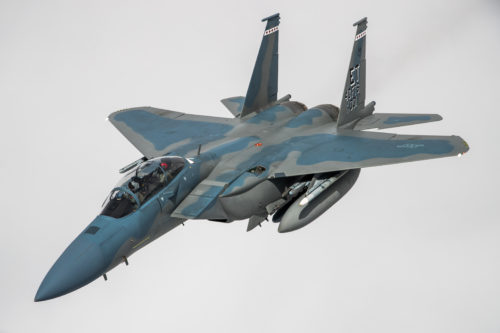Data from the F-15 Eagle Passive Active Warning Survivability System was analyzed by the U.S. Air Force Operational Test and Evaluation Center Detachment 6 team and the analysis was that the system is effective in contested airspace.

“EPAWSS proves that the jet can also get into the middle of a fight and cause massive issues for our adversaries,” said Capt. Max Denbin, the team’s lead test engineer.
“Whether in a more passive jamming role, or as a follow-on strike package, an F-15E or EX with EPAWSS causes detrimental impacts to opposing forces decision space,” said 1st Lt. Hagan Strader, lead analyst.
Traveling to Eglin Air Force Base and Tyndall Air Force Base, the team analyzed data from the operational test missile shots from the F-15Ex.
“The F-15EX can shoot from a significantly increased range – farther than any other fighter in the U.S. Air Force arsenal – and provides the unique capability of holding 12 AMRAAMs or other large ordinance,” Denbin added.
For more information, hit the Source below